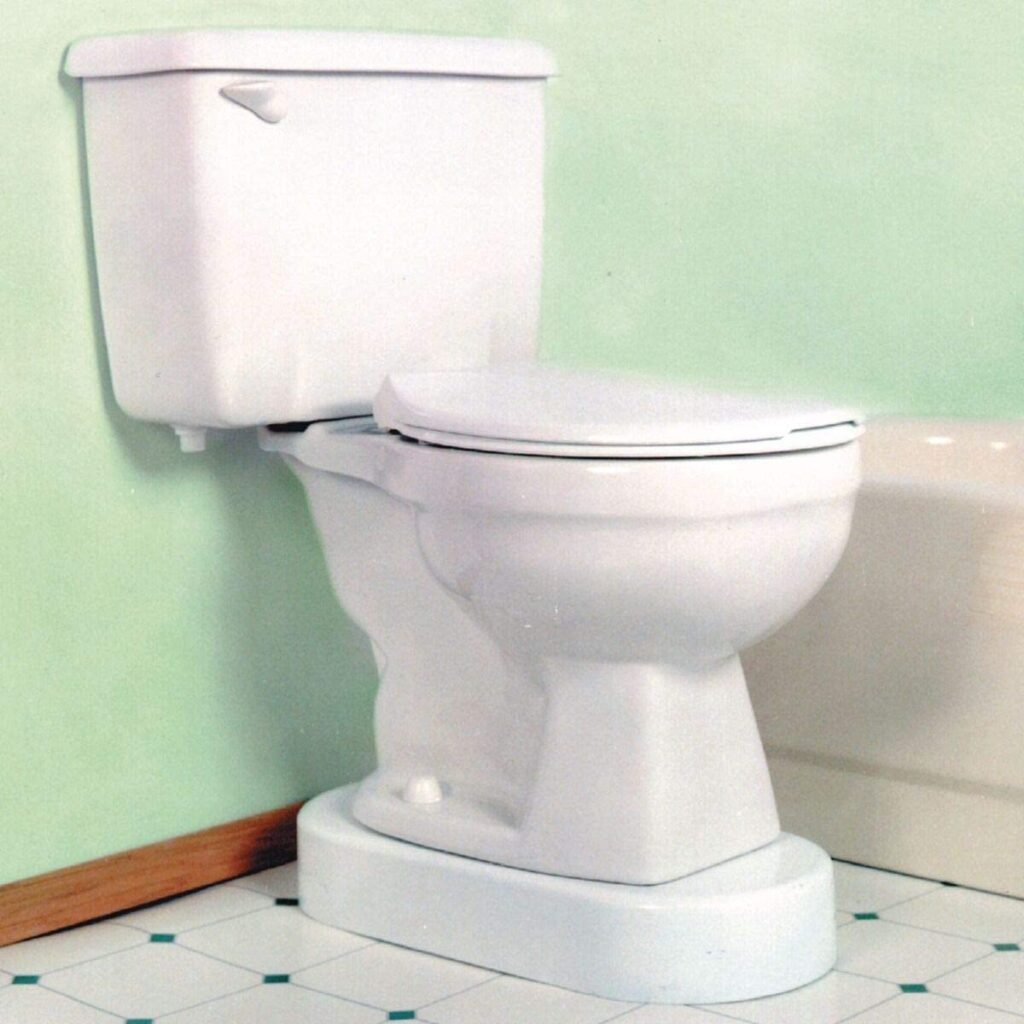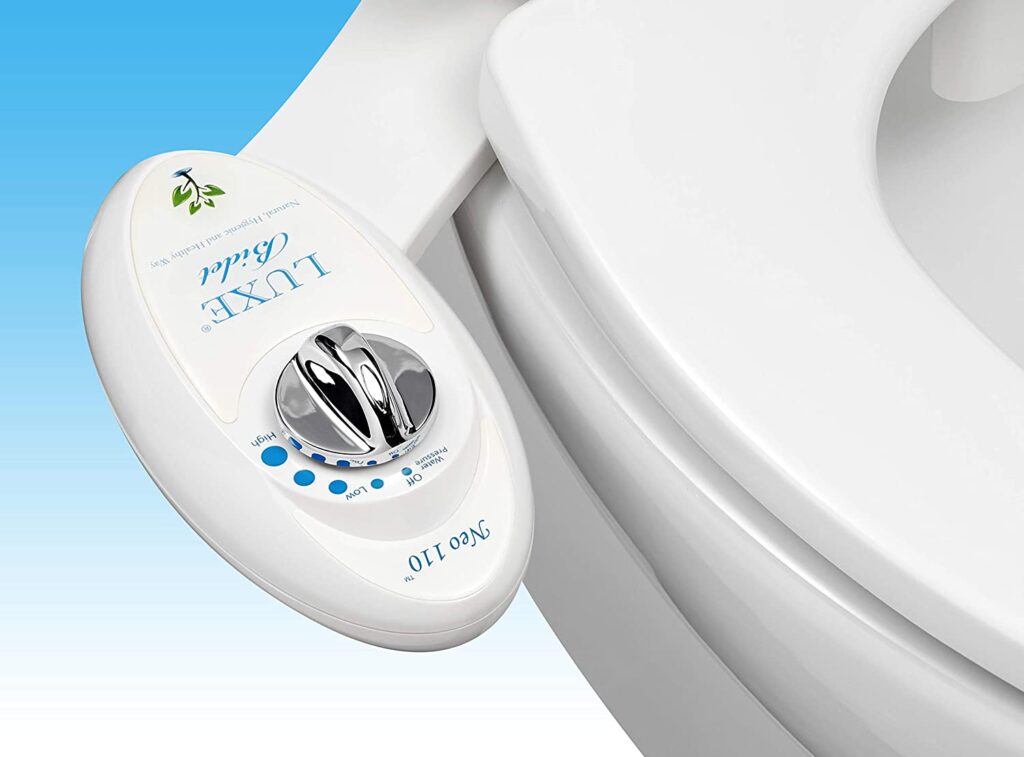Is your toilet wobbling every time you sit down? That unsteady feeling isn’t just annoying—it could signal a bigger problem if left unchecked.
A toilet that moves side to side can lead to leaks, damage to your bathroom floor, or even costly repairs down the line. But don’t worry—this is a fix you can handle with a little guidance. You’ll learn step-by-step how to stabilize your wobbly toilet and restore peace to your bathroom.
Whether you’re a seasoned DIYer or just someone tired of the constant rocking, this guide will walk you through exactly what to do. Ready to save yourself the hassle (and the repair bill)? Let’s get started!
Table of Contents
Causes Of A Wobbly Toilet
A wobbly toilet can be frustrating and even a little embarrassing when guests visit. But what causes this common issue? Understanding the root of the problem is the first step to fixing it. Let’s break it down.
1. Loose Bolts
Loose bolts are often the main reason your toilet wobbles. These bolts, called closet bolts, secure your toilet to the floor. Over time, they can loosen due to frequent use or wear.
Check the base of your toilet. Are the bolts visibly loose or crooked? If so, tightening them might stabilize your toilet, but be careful not to overtighten as this can crack the porcelain.
2. Uneven Flooring
Does your bathroom floor have bumps, dips, or uneven tiles? This could be why your toilet rocks side to side.
Place a level on the floor around the toilet base. If the bubble isn’t centered, you might need to shim the toilet or address the flooring itself.
3. Deteriorated Wax Ring
The wax ring beneath your toilet creates a seal between the toilet and the drainpipe. Over time, this ring can compress or deteriorate, causing the toilet to wobble.
If you notice water pooling around the base of the toilet or a musty smell, the wax ring might be compromised. Replacing it could solve both the wobbling and any leaks.
4. Subfloor Damage
Water damage to the subfloor can weaken the foundation beneath your toilet. This often happens when leaks go unnoticed for a long time.
If the floor feels soft or spongy around the toilet, the subfloor may need repairs. Ignoring this could lead to bigger (and more expensive) problems down the line.
5. Poor Installation
A poorly installed toilet might not sit flush against the floor. This is especially common if the toilet was installed in a rush or by someone inexperienced.
If you recently had your toilet installed and it wobbles, double-check the installation. You might need to re-seat the toilet to ensure it’s level and secure.
Have you encountered any of these issues in your bathroom? Fixing a wobbly toilet isn’t just about comfort—it’s about preventing further damage to your home. By identifying the cause, you’re already on your way to a solid solution.

Credit: www.youtube.com
Essential Tools And Materials
A wobbly toilet can be annoying and even a bit alarming. Fixing it might seem intimidating, but with the right tools and materials, it’s a manageable task for anyone. Let’s break down what you need to have on hand to tackle this common household issue effectively.
Essential Tools
Having the right tools can make all the difference when fixing a wobbly toilet. Here’s a quick checklist:
- Adjustable wrench: You’ll need this to loosen or tighten bolts without damaging them.
- Screwdriver: A flathead or Phillips screwdriver can help with removing the toilet seat or other parts if needed.
- Utility knife: This comes in handy for cutting away old caulk or trimming shims.
- Level: Ensure your toilet is sitting evenly by using a bubble or laser level.
- Gloves: Protect your hands while working around grime or cleaning products.
Have you ever tried fixing something only to realize halfway through that you’re missing a tool? Double-check your toolbox before starting—it saves frustration later.
Materials You’ll Need
The materials you use matter just as much as the tools. Here’s what you’ll need:
- Toilet shims: These small wedges help stabilize your toilet by filling gaps under its base.
- Wax ring: If the wobbling has caused leaks, replacing the wax ring is a must.
- Caulk: Use waterproof caulk to seal gaps and provide extra support.
- Cleaning supplies: A disinfectant spray or wipes can keep things sanitary while you work.
Shims are the unsung heroes of toilet repairs. If you’ve never used them before, they’re surprisingly simple to install and incredibly effective. Just slide them into place under the toilet base until it stops wobbling.
Do You Really Need Everything?
You might be wondering if you need all these tools and materials for every wobbling toilet. The answer depends on the severity of the issue. For minor wobbles, shims and a wrench might be enough. If you’re dealing with leaks or damaged parts, you’ll want to have the full list ready.
Before you begin, ask yourself: Do you want a quick fix or a thorough solution? Preparing ahead with the right tools ensures you won’t have to stop midway and make a hardware store run.
Checking The Bolts
Does your toilet wobble side to side? A shaky toilet can cause discomfort and lead to further damage. One common cause is loose bolts securing the toilet to the floor. Checking and tightening these bolts is a simple fix that can save you from bigger problems later. Follow these steps to inspect and secure the bolts properly.
Inspecting The Toilet Bolts
Start by locating the bolts at the toilet’s base. These are usually covered with small caps. Carefully remove the caps using a flathead screwdriver or your fingers. Check if the bolts are visibly loose or damaged. If they look rusty or broken, replacement may be needed.
Gently wiggle the toilet to confirm the bolts’ condition. A slight movement indicates they need tightening. Avoid applying too much force to prevent further loosening. Ensure you examine both sides of the toilet base for consistency.
Tightening Loose Bolts
Use an adjustable wrench or pliers to tighten the bolts. Turn them clockwise to secure them. Tighten each bolt gradually, alternating between sides to keep the toilet level. Avoid over-tightening, as this can crack the porcelain base.
Once the bolts are snug, test the toilet by gently wiggling it. If the wobbling stops, you’ve fixed the issue. Replace the caps over the bolts to protect them from dirt and moisture.
Leveling The Toilet Base
Nothing is more annoying than sitting on a toilet that wobbles side to side. It feels unstable and can even lead to leaks or damage over time. Fixing this issue starts with leveling the toilet base, a straightforward task that ensures your toilet stays steady and secure.
Using Shims For Stability
Shims are your best friend when it comes to stabilizing a wobbly toilet. These small, thin pieces of plastic or wood slide under the base of your toilet to fill gaps and even out the surface. Plastic shims work better in bathrooms because they resist moisture and won’t rot like wood.
To use shims, first, gently rock your toilet to identify where the unevenness is. Once you find the gap, slide a shim under the base at that spot. Make sure it’s snug but not overly tight, as too much pressure can damage the toilet or the floor.
After inserting the shims, check if the wobble is gone. If not, adjust or add more shims as needed. Keep them evenly spaced around the base to avoid creating more imbalance.
Ensuring A Level Position
Once the shims are in place, use a level tool to confirm your toilet is properly aligned. Lay the level across the seat or tank to check if it’s perfectly horizontal. If the bubble in the level isn’t centered, you may need to tweak the shims a bit more.
Take your time here. A toilet that’s slightly off can still cause stress on the seals and bolts over time. Tighten the toilet bolts carefully once you’re satisfied with the alignment, but don’t overtighten them—it can crack the porcelain base.
Finally, trim any excess shim material sticking out from under the toilet base with a utility knife. This keeps the area neat and prevents tripping hazards. Wouldn’t you rather have a secure, level toilet than deal with a wobbly annoyance every day?
Inspecting The Wax Ring
A wobbling toilet can be frustrating and might lead to larger issues. One common culprit is a damaged or improperly installed wax ring. The wax ring creates a seal between the toilet and the drain pipe. Inspecting it is essential to solve the problem effectively. Below, we’ll discuss signs of damage and how to replace the wax ring.
Signs Of A Damaged Wax Ring
A damaged wax ring often leads to water leaks around the toilet base. You may notice water pooling on the floor or damp areas nearby. A foul odor is another sign, as sewer gases can escape through a broken seal. The toilet may also feel unsteady or shift side to side when you sit on it. If you see any of these issues, the wax ring might need replacing.
Replacing The Wax Ring
Start by turning off the water supply to your toilet. Flush the toilet to remove most of the water from the tank and bowl. Use a sponge or towel to soak up remaining water. Next, unscrew the bolts securing the toilet to the floor. Carefully lift the toilet straight up and place it on a soft surface.
Remove the old wax ring from the base of the toilet and the flange. Scrape off any residue to ensure a clean surface. Position the new wax ring on the toilet flange or the toilet base, depending on the type. Lower the toilet gently onto the wax ring, ensuring proper alignment. Tighten the bolts evenly and reconnect the water supply. Test your toilet to ensure it’s stable and leak-free.
Securing The Toilet Properly
A wobbly toilet can cause frustration and potential damage if not fixed. Properly securing the toilet is essential to keep it stable and functional. Follow these steps to ensure your toilet stays firmly in place and prevents unnecessary movement.
Reattaching The Toilet Bolts
Start by locating the toilet bolts at the base of the toilet. These bolts connect the toilet to the floor. Remove the plastic caps covering the bolts using a flathead screwdriver. Check if the bolts are loose or damaged. If loose, tighten them gently using an adjustable wrench. If the bolts are damaged, replace them with new ones of the same size. Make sure the toilet is aligned properly before tightening the bolts.
Avoiding Over-tightening
Over-tightening the bolts can crack the porcelain base of the toilet. Tighten the bolts gradually, alternating between each side. This ensures even pressure and prevents damage to the toilet. Stop tightening once the wobble stops and the toilet feels secure. Test the toilet by gently rocking it side to side. If it remains stable, the bolts are secure.
Sealing The Base
A wobbly toilet can be frustrating and lead to further damage. Sealing the base is an effective way to stabilize the toilet. It also prevents water from seeping under it. This method enhances the appearance of your bathroom. Below are simple steps to seal the base and keep your toilet steady.
Applying Caulk Around The Base
Start by cleaning the area around the toilet base thoroughly. Remove any dirt, dust, or debris using a damp cloth. Ensure the surface is dry before applying the caulk.
Choose a high-quality silicone caulk that is waterproof and mold-resistant. Cut the tip of the caulk tube at a 45-degree angle for better control. Use a caulk gun to apply an even bead around the toilet base.
Press the caulk into the gap with your finger or a caulk smoothing tool. Wipe away any excess caulk with a damp cloth. Allow the caulk to dry completely as per the manufacturer’s instructions.
Preventing Future Movement
Inspect the toilet bolts to ensure they are tight but not overtightened. Loose bolts can cause wobbling, while overtightening can damage the toilet base.
Install rubber or plastic shims under the toilet base if gaps exist. These shims provide extra support and prevent movement. Trim any visible parts of the shims for a clean finish.
Regularly check the toilet base for signs of instability. Tighten bolts or reseal the base as needed to maintain stability.

Credit: www.youtube.com
Testing For Stability
A wobbly toilet can be frustrating and even a bit nerve-wracking. Fixing it might seem intimidating at first, but the good news is that testing for stability is pretty straightforward. Once you’ve tackled this, you’re well on your way to a secure and steady toilet. Let’s dive into the steps you need to take!
Checking For Side-to-side Movement
Start by gently rocking the toilet side to side. Use both hands to get a clear sense of how much it moves. Is it just a slight wiggle, or does it feel like it might tip over?
Inspect the base of the toilet closely. Look for visible gaps between the toilet and the floor. These gaps are often the culprit behind the wobbling.
Don’t stop with just observing. Press down on different areas—front, sides, and back of the base. This helps you pinpoint exactly where the instability is strongest.
Final Adjustments
Once you’ve identified the problem areas, it’s time to make adjustments. If the toilet is wobbling due to uneven flooring, use plastic shims to level it out. Slide them into the gaps until the toilet feels stable.
If the bolts securing the toilet to the floor are loose, tighten them carefully using a wrench. Be gentle—over-tightening could crack the porcelain.
After adjustments, test the toilet again. Sit on it and rock slightly to confirm stability. If it’s still moving, repeat the steps until it’s solid. Wouldn’t it feel great knowing your toilet is finally wobble-free?
Fixing a wobbly toilet doesn’t have to be overwhelming. By testing for stability and making the right adjustments, you can tackle this common issue with confidence.
/tightening-a-loose-toilet-seat-2719023-hero-31a7b0bbe0434ea281b2e77bb1aa4e1a.jpg)
Credit: www.thespruce.com
Frequently Asked Questions
Why Is My Toilet Wobbling Side To Side?
A wobbly toilet often means loose bolts or a damaged wax ring. Tighten the bolts or replace the ring.
How Do I Stop My Toilet Seat From Moving Side To Side?
Tighten the bolts underneath the toilet seat using a wrench or screwdriver. Replace worn-out washers for better stability.
How Do You Stop A Toilet From Wobbling?
Tighten the toilet bolts using a wrench. Add plastic shims under the base for stability. Re-tighten bolts securely.
What Happens If You Don’t Fix A Wobbly Toilet?
A wobbly toilet can cause water leaks, damage floors, promote mold growth, and lead to costly repairs if ignored.
Conclusion
Fixing a wobbly toilet doesn’t have to be complicated. With the right tools and steps, you can secure it easily. Tighten the bolts, check the wax ring, and test for stability. Regular maintenance helps avoid future issues and keeps your toilet steady.
Always address small problems early to prevent bigger repairs. A stable toilet improves comfort and safety in your bathroom. Take your time and follow the process carefully. You’ll save money and enjoy a wobble-free fixture. Now, you’re ready to handle this common household fix with confidence.






